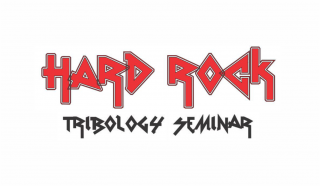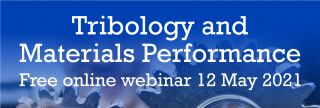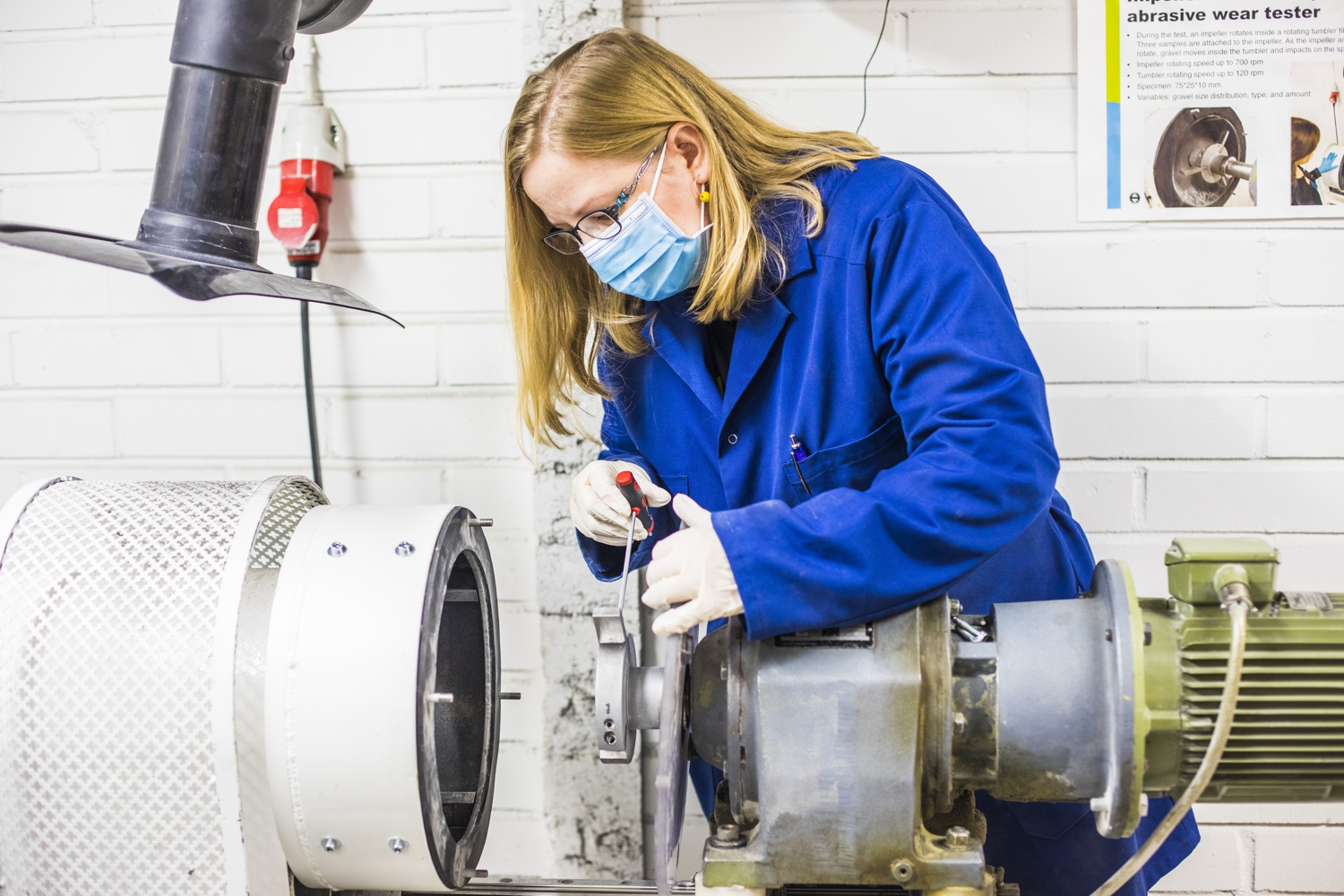The 12th International TWC Wear Seminar Hard Rock Tribology was jointly organized by Tampere Wear Center and PerforMat network. For the first time, it was arranged as a free online webinar, collecting a surprisingly large global audience with 340 registered participants from 37 countries from Chile to New Zealand. The seminar concentrated on hard rock tribology with emphasis on the wear testing methods for abrasive, impact-abrasive, and erosion wear in mining and mineral handling. Moreover, the combined effects of wear and corrosion, or tribocorrosion, in various industrial cases were presented.
The webinar was started by Dr. Kati Valtonen from Tampere Wear Center with a presentation discussing the different motivations and reasons for wear research. A recent study has estimated that in the mining industry the energy spent to overcome friction and to manufacture and replace worn-out parts cause globally 970 million tons of CO2 emissions. These emissions and unnecessary energy losses can be significantly reduced with better tribological solutions and efficient and precise materials selection. In Tampere, these challenges have been tackled for example by developing new wear testing methods that better simulate the abrasive, impact-abrasive, and erosion wear conditions in hard rock operations. The relevance of these application-oriented wear test methods has been evaluated by comparing the test results with samples obtained from various in-service cases. The comparison of different test methods and field tests is possible if the results are normalized against the actual test parameters, such as the wear area and the test time. It is also essential to characterize and compare the wear mechanisms and deformation of materials, for example using various microscopy techniques. Only by combing these two different types of results, the relevance of the used test method can be assessed and confirmed. Dr. Valtonen also emphasized that the work hardening capability of the steel usually increases its wear resistance in high-stress abrasive and impact-abrasive conditions. This is an important factor especially when making the selection among steels with a similar bulk hardness.
The importance of identifying the most relevant degradation mechanisms and relevant mechanical properties of materials subjected to severe wear conditions were also highlighted in the presentation of Dr. Giselle Ramírez Sandoval from EURECAT, Spain. At EURECAT, the surface degradation of high-chromium white cast irons and hardmetals have been evaluated under cyclic loading conditions. The contact fatigue conditions were produced using a servo-hydraulic testing machine equipped with a spherical indenter. From the test results, the deformation behavior and cracking of the material were determined for further analysis. Other wear tests and testing systems designed and built at EURECAT include, for example, roller-on-roller, pin-on-roller, and multi-impact tests. The multi-impact test has been utilized for example in the studies of the damage evolution in pellets. This test set-up consists of a particle chamber that moves unidirectionally on two linear guide rails mounted on a servo-hydraulic testing machine. The particles collide with the top and bottom walls of the chamber that also act as wear test samples. Thus, the system can be utilized both for the testing of wear resistant materials and abrasive media.
Enhanced drilling methods for geothermal energy and challenges in tunneling and agriculture have been the driving forces for developing innovative wear test methods at TalTech, Estonia. In his presentation, Dr. Maksim Antonov concentrated on the research done with the multifunctional modular tribo-system (MMTS). In the MMTS device, the impact energy and inertia of the pendulum system that impacts the sample against a moving wheel can be adjusted. When fresh abrasive material is fed to the contact point, the resulting wear mechanism is impact-abrasion. The MMTS device has been used for example for the impact-abrasive testing of steels and polycrystalline diamond cutting elements, to study the effects of the metal binder content and reinforcing particle size on the wear rate of hard metals, and for the determination of the properties of various minerals. Because the MMTS system also makes possible the in-situ monitoring of the energy consumed during the test, the general understanding of the wear processes has increased markedly.
Tribocorrosion is a challenging material degradation mechanism, because combined wear and corrosion may accelerate the material losses significantly in the industrial conditions. Using two different case examples, Professor Elina Huttunen-Saarivirta from VTT Technical Research Centre of Finland Ltd demonstrated how quantification of the wear and corrosion synergy components in the pin-on-disc experiments can be performed. In a simulated waste solution, the degradation behavior of a martensitic steel was clearly dominated by wear-induced corrosion. In contrast to this, wear and corrosion-induced wear appeared to be the dominant degradation mechanisms for non-passivated coatings, when the behavior of thermally sprayed cermet coatings in paper machine environment was simulated. In the case of a WC-CoCr HVAF coating, the contribution of corrosion-induced wear increased linearly with an increase in the corrosion potential.
One of the main objectives of the PerforMat partnership network is to create practices for sharing the research infrastructures, data, and virtual tools to enhance the transparency of science and exploitation of the results. Therefore, the PerforMat network will arrange webinars and seminars related to materials performance also in the future. The next free online webinar Tribology and Materials Performance will be arranged already on May 12th 2021, and at least two more webinars are scheduled for the coming Fall. The themes of these webinars will be corrosion and hydrogen embrittlement.
The presentations of the 12th International TWC Wear Seminar are available at https://research.tuni.fi/twc/seminar/


More information related to the presentations of the 12th International TWC Wear Seminar
Holmberg, K, Kivikytö-Reponen, P, Härkisaari, P, Valtonen, K & Erdemir, A 2017, Global energy consumption due to friction and wear in the mining industry. Tribology International, vol. 115, pp. 116-139. (open access)
Ojala, N., Valtonen K., Heino V., Kallio M., Aaltonen J., Siitonen P. & Kuokkala, V.-T. 2014. Effects of composition and microstructure on abrasive wear performance of quenched wear resistant steels. Wear 317(1–2): 225–232. https://doi.org/10.1016/j.wear.2014.06.003
Valtonen, K., Ratia, V., and Kuokkala, V.-T. 2019. Research methods for the evaluation of the relevance of application oriented laboratory wear tests. Finnish Journal of Tribology 36:46-53 https://doi.org/10.30678/fjt.82438 (open access)
Haiko, O., Kaikkonen, P., Somani, M., Valtonen, K., Kömi, J. 2020. Characteristics of carbide-free medium-carbon bainitic steels in high-stress abrasive wear conditions, Wear, https://doi.org/10.1016/j.wear.2020.203386 (open access)
Valtonen, K 2018, Relevance of Laboratory Wear Experiments for the Evaluation of In-Service Performance of Materials. Tampere University of Technology. Publication, vol. 1587, Tampere University of Technology. (open access)
Antonov, M., Hussainova, I., and Adoberg, E. 2013 Effect of loading system inertia on tribological behaviour of ceramic–ceramic, ceramic–metal and metal–metal dry sliding contacts. Tribology International 65:207–214, https://doi.org/10.1016/j.triboint.2013.03.025
Antonov, M., Veinthal, R., and Hussainova, I. Invention: The device for abrasive wear testing of materials; Priority number: P201400022, Estonian Patent, 2014.
Antonov, M., Veinthal, R., Yung, D-L., Katušin, D., Hussainova, I. 2015. Mapping of impact-abrasive wear performance of WC–Co cemented carbides. Wear 332-333:971−978, https://doi.org/10.1016/j.wear.2015.02.031
Konyashin, I., Antonov, M., Ries, B. 2020. Wear behaviour and wear mechanisms of different hardmetal grades in comparison with polycrystalline diamond in a new impact-abrasion test, International Journal of Refractory Metals & Hard Materials 92:105286, https://doi.org/10.1016/j.ijrmhm.2020.105286
Gomon, D., Auriemma, F., Antonov, M. 201). Assessment of abrasive powder behaviour during impact-abrasive wear of PCD elements. Wear, 426:151−161, https://doi.org/10.1016/j.wear.2019.03.024
Mäntyranta, A., Heino, V., Isotahdon, E., Salminen, T., Huttunen-Saarivirta, E. 2019. Tribocorrosion behaviour of two low-alloy steel grades in simulated waste solution, Tribology International, 138:250-262, https://doi.org/10.1016/j.triboint.2019.05.032
Huttunen-Saarivirta, E., Heino, V., Isotahdon, Kilpi, L., Ronkainen, H. 2020. Tribocorrosion behaviour of thermally sprayed cermet coatings in paper machine environment, Tribology International 142:106006, https://doi.org/10.1016/j.triboint.2019.106006
Text: Kati Valtonen, Tampere University
Photo: Jonne Renvall, Tampere University


